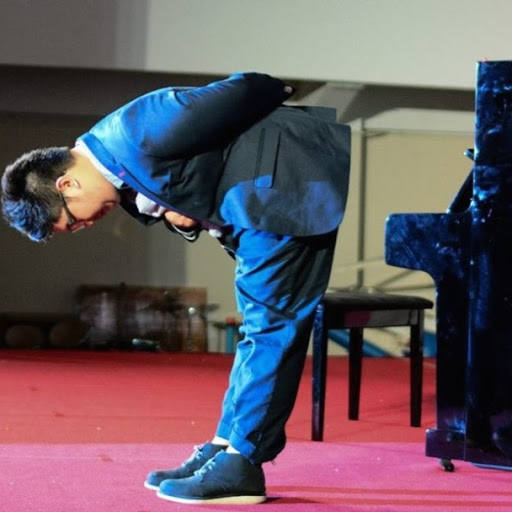Dan Qing Liu
age ~56
from Southington, CT
- Also known as:
-
- Dan Q Liu
- Dan Q Qingliu
- Dan Qing-Li
- Dan Q Cheng
- Danqing Liu
- Dan Quing
- Liu Cheng Danqing
Dan Liu Phones & Addresses
- Southington, CT s
- N Attleboro, MA
- 261 Hickory Hill Dr, Waterbury, CT 06708 • 2035979269
- North Kingstown, RI
Specialities
Buyer's Agent • Listing Agent
Lawyers & Attorneys

Dan Liu - Lawyer
view sourceSpecialties:
Litigation
Insurance Coverage & Bad Faith
Insurance Coverage & Bad Faith
ISLN:
920965212
Admitted:
2009
University:
University of California, Berkeley, B.A., 1997; Wesley College, M.B.A., 2005
Law School:
Golden Gate University School of Law, J.D., 2009
Us Patents
-
Cation Energy Storage Device And Methods
view source -
US Patent:20230031332, Feb 2, 2023
-
Filed:May 27, 2022
-
Appl. No.:17/826997
-
Inventors:- Providence RI, US
Dan LIU - Providence RI, US -
International Classification:H01M 4/136
H01M 10/054
H01M 4/36
H01M 4/58
C01B 25/37
H01M 4/62
C01B 25/45
C01B 25/38
C01B 25/445
H01M 10/0525 -
Abstract:An energy storage composition can be used as a new Na-ion battery cathode material. The energy storage composition with an alluaudite phase of AT(PO4), NaT(PO4), NaFe(PO4)and NaFe(PO4), is described including the hydrothermal synthesis, crystal structure, and electrochemical properties. After ball milling and carbon coating, the compositions described herein demonstrate a reversible capacity, such as about 140.7 mAh/g. In addition these compositions exhibit good cycling performance (93% of the initial capacity is retained after 50 cycles) and excellent rate capability. These alluaudite compounds represent a new cathode material for large-scale battery applications that are earth-abundant and sustainable.
-
Cation Energy Storage Device And Methods
view source -
US Patent:20210083265, Mar 18, 2021
-
Filed:Apr 29, 2020
-
Appl. No.:16/862286
-
Inventors:- Providence RI, US
Dan LIU - Providence RI, US -
International Classification:H01M 4/136
H01M 10/054
H01M 4/36
H01M 4/58
C01B 25/37
H01M 4/62
C01B 25/45
C01B 25/38
C01B 25/445
H01M 10/0525 -
Abstract:An energy storage composition can be used as a new Na-ion battery cathode material. The energy storage composition with an alluaudite phase of AT(PO4), NaT(PO4), NaFe(PO4)and NaFe(PO4), is described including the hydrothermal synthesis, crystal structure, and electrochemical properties. After ball milling and carbon coating, the compositions described herein demonstrate a reversible capacity, such as about 140.7 mAh/g. In addition these compositions exhibit good cycling performance (93% of the initial capacity is retained after 50 cycles) and excellent rate capability. These alluaudite compounds represent a new cathode material for large-scale battery applications that are earth-abundant and sustainable.
-
Cation Energy Storage Device And Methods
view source -
US Patent:20180108905, Apr 19, 2018
-
Filed:Apr 7, 2016
-
Appl. No.:15/564711
-
Inventors:- Providence RI, US
Dan LIU - Providence RI, US -
International Classification:H01M 4/136
H01M 10/0525
H01M 10/054
H01M 4/58
H01M 4/36
C01B 25/37
C01B 25/445 -
Abstract:An energy storage composition can be used as a new Na-ion battery cathode material. The energy storage composition with an alluaudite phase of AT(PO4), NaT(PO4), NaFe(PO4)and NaFe(PO4), is described including the hydrothermal synthesis, crystal structure, and electrochemical properties. After ball milling and carbon coating, the compositions described herein demonstrate a reversible capacity, such as about 140.7 mAh/g. In addition these compositions exhibit good cycling performance (93% of the initial capacity is retained after 50 cycles) and excellent rate capability. These alluaudite compounds represent a new cathode material for large-scale battery applications that are earth-abundant and sustainable.
-
Electrochemical Reduction Of Co2 At Copper Nanofoams
view source -
US Patent:20160215404, Jul 28, 2016
-
Filed:Oct 3, 2014
-
Appl. No.:15/026304
-
Inventors:- Providence RI, US
Sujat SEN - Providence RI, US
Dan LIU - Providence RI, US -
International Classification:C25B 11/03
C25B 11/04
C25B 3/04 -
Abstract:This invention includes a catalytic copper electrode is selected from the group comprising copper nanofoam, copper aerogel, and copper nanoparticles. Particular note is made of the catalytic copper electrode having at least about 5 times and preferably about 10 times the electrochemically accessible surface area as determined by the Randles-Sevcik equation at 50 mV/s. particular note is made of the catalytic coper electrode being a copper nanofoam electrode.This invention further includes a method for the reduction of COby the steps of (i) providing a membrane divided electrochemical cell comprising an anode in a first cell compartment, a catalytic-copper electrode in a second cell compartment containing an aqueous electrolyte in contact with the anode and cathode; (ii) introducing COto said second cell compartment (iii) exposing said COto said catalytic-copper electrode at a step potential between about −0.8 and preferably about −1.0 and about −1.8 V versus the reference electrode; (iv) electrochemically reducing said COand solution by the catalytic-copper electrode in the second cell compartment; (v) thereby producing propylene and (vi) extracting said propylene from said second compartment.
Name / Title
Company / Classification
Phones & Addresses
HAPPY GARDEN USA LLC
202 New Britain Rd, Berlin, CT 06037
Isbn (Books And Publications)

License Records
Dan Liu
License #:
="30190" - Active
Issued Date:
Jun 15, 2012
Renew Date:
Dec 1, 2015
Expiration Date:
Nov 30, 2017
Type:
Certified Public Accountant
Amazon

Still Expression, Recent Flower Paintings by Liu Dan
view sourceAuthor
Liu Dan
Binding
Paperback
Publisher
Chinese Porcelain Co.
ISBN #
3

International laws of living marine resources conservation (Chinese Edition)
view sourceAuthor
Liu Dan
Binding
Paperback
Pages
299
Publisher
Shanghai People's Publishing House
ISBN #
7208105731
EAN Code
9787208105737
ISBN #
1
News

China has been killing turtles, coral and giant clams in the South China Sea, tribunal finds
view source- Dan Liu, a researcher at the Center for Polar and Deep Ocean Development at Shanghai Communications University, told the CSIS panel that the Philippine claims were some kind of political mask and questioned how the experts could evaluate the reefs unless they visited them personally something ne
- Date: Jul 13, 2016
- Category: World
- Source: Google
Flickr
Plaxo

Dan Liu
view sourceShanghaiHR Director, Asia Sourcing at Home Depot

liu dan
view source
Liu Dan
view sourceinterpreter at Guangzhou KaiDa Bearing Co

Liu Dan
view sourceBWTEK

Dan Liu
view sourceBoston, MA

Dan Liu
view sourceAlibaba.com

dan liu
view sourcecharlotte
Googleplus

Dan Liu
Work:
Yale University - Postdoc
Education:
Yale University, Vanderbilt University, Nanjing University

Dan Liu
Work:
NVESTO - Software Engineer (2010)
Education:
University of British Columbia - Computer Science
Tagline:
Dan the man

Dan Liu
Work:
Google
Education:
UCSD, Tsinghua University

Dan Liu
Education:
Cornell University College of Engineering - Operations Research and Engineering, Stanford University - Industrial Engineering, St. Albans - HS

Dan Liu
Education:
Saint Louis University - Biochemistry, Washington University in St. Louis - Biology
Tagline:
Systemic Anomaly

Dan Liu
Education:
Fudan University - English, Harbin Institute of Technology - English

Dan Liu
Education:
Chinese Taipei School(K.L.)

Dan Liu
Education:
Tsinghua University - Architecture
Tagline:
Wissen.
Classmates

Dan Liu
view sourceSchools:
La Palma Christian School La Palma CA 1996-2000

St. Albans High School, W...
view sourceGraduates:
Dan Liu (1984-1987),
Peter Beler (1994-1998),
Rush Lennon (1981-1985),
Derick Daniels (1942-1946),
Christopher Carter (1962-1966)
Peter Beler (1994-1998),
Rush Lennon (1981-1985),
Derick Daniels (1942-1946),
Christopher Carter (1962-1966)

Rutgers University - Livi...
view sourceGraduates:
Matthew Wisner (1990-1994),
Chris Mesopotanese (1995-1998),
Daniel Liu (1996-2002),
Mary Lynne Hansen (1978-1980)
Chris Mesopotanese (1995-1998),
Daniel Liu (1996-2002),
Mary Lynne Hansen (1978-1980)

Parsons Junior High Schoo...
view sourceGraduates:
Pamela Macapagal (1995-1999),
George Rolfo (1984-1987),
Sean Kinney (1995-1999),
Betty Lax (1973-1975),
Teres Rodney (1991-1995),
E Dan Liu (1990-1994)
George Rolfo (1984-1987),
Sean Kinney (1995-1999),
Betty Lax (1973-1975),
Teres Rodney (1991-1995),
E Dan Liu (1990-1994)

Carlmont High School, Bel...
view sourceGraduates:
Daniel liu (2001-2005)

Sentinel Secondary School...
view sourceGraduates:
Daniel Liu (2000-2004),
Christine Hamblin (1964-1968),
Clifford Jones (1964-1968),
Dan Man (1994-1998)
Christine Hamblin (1964-1968),
Clifford Jones (1964-1968),
Dan Man (1994-1998)

University of Washington ...
view sourceGraduates:
Marcie Stilwell (1987-1990),
Daniel Liu (1977-1980),
Mitch Sengson (1992-1994),
Michael Salen (1998-2002),
Isaac Bekker (1998-2002)
Daniel Liu (1977-1980),
Mitch Sengson (1992-1994),
Michael Salen (1998-2002),
Isaac Bekker (1998-2002)
Youtube

Dan Liu
view source
Dan Liu
view source
Dan Liu
view source
Dan Liu
view source
Dan Dan Liu
view source
Liu Dan
view source
Dan Liu
view source
(Dan Liu)
view sourceGet Report for Dan Qing Liu from Southington, CT, age ~56













